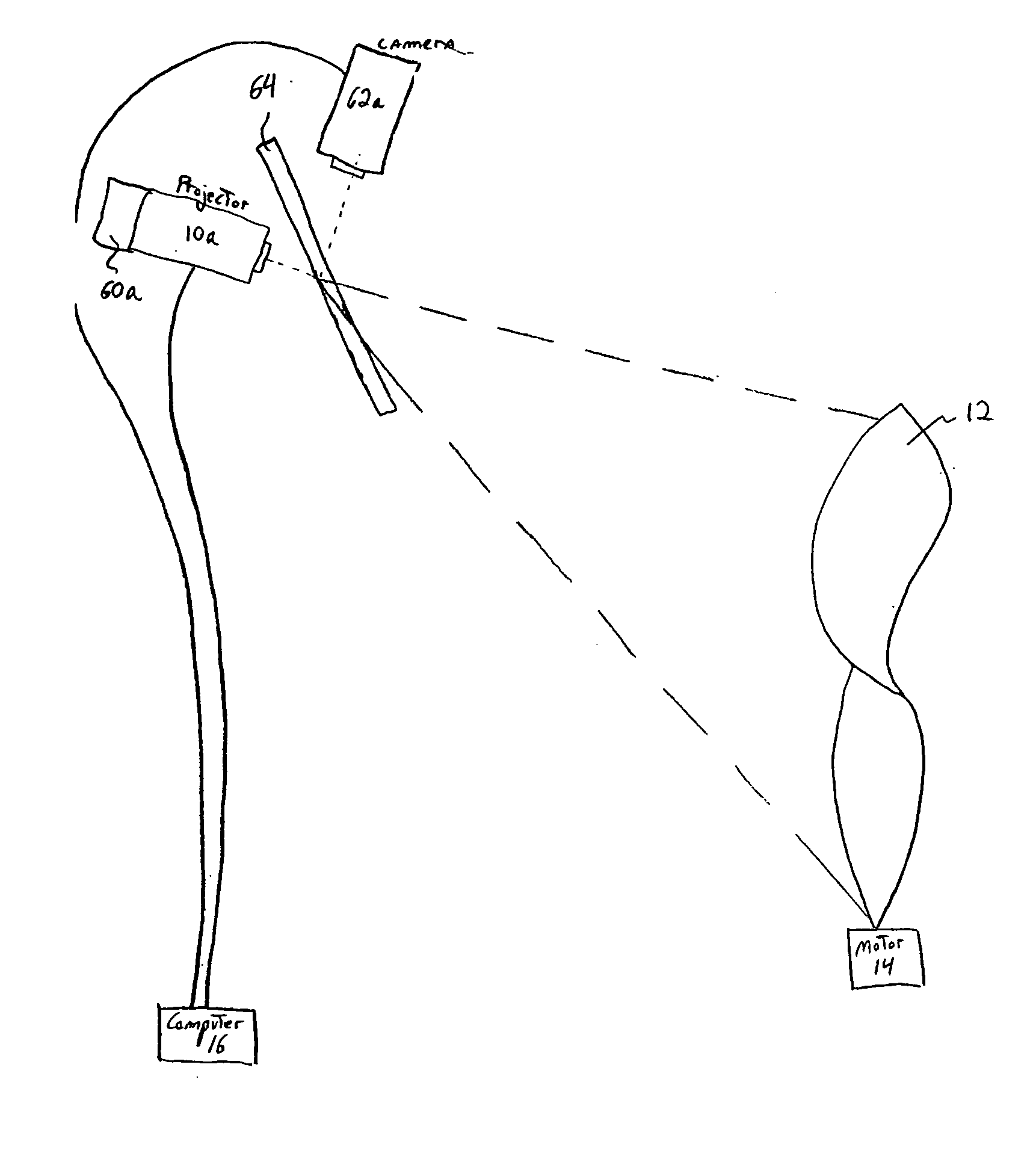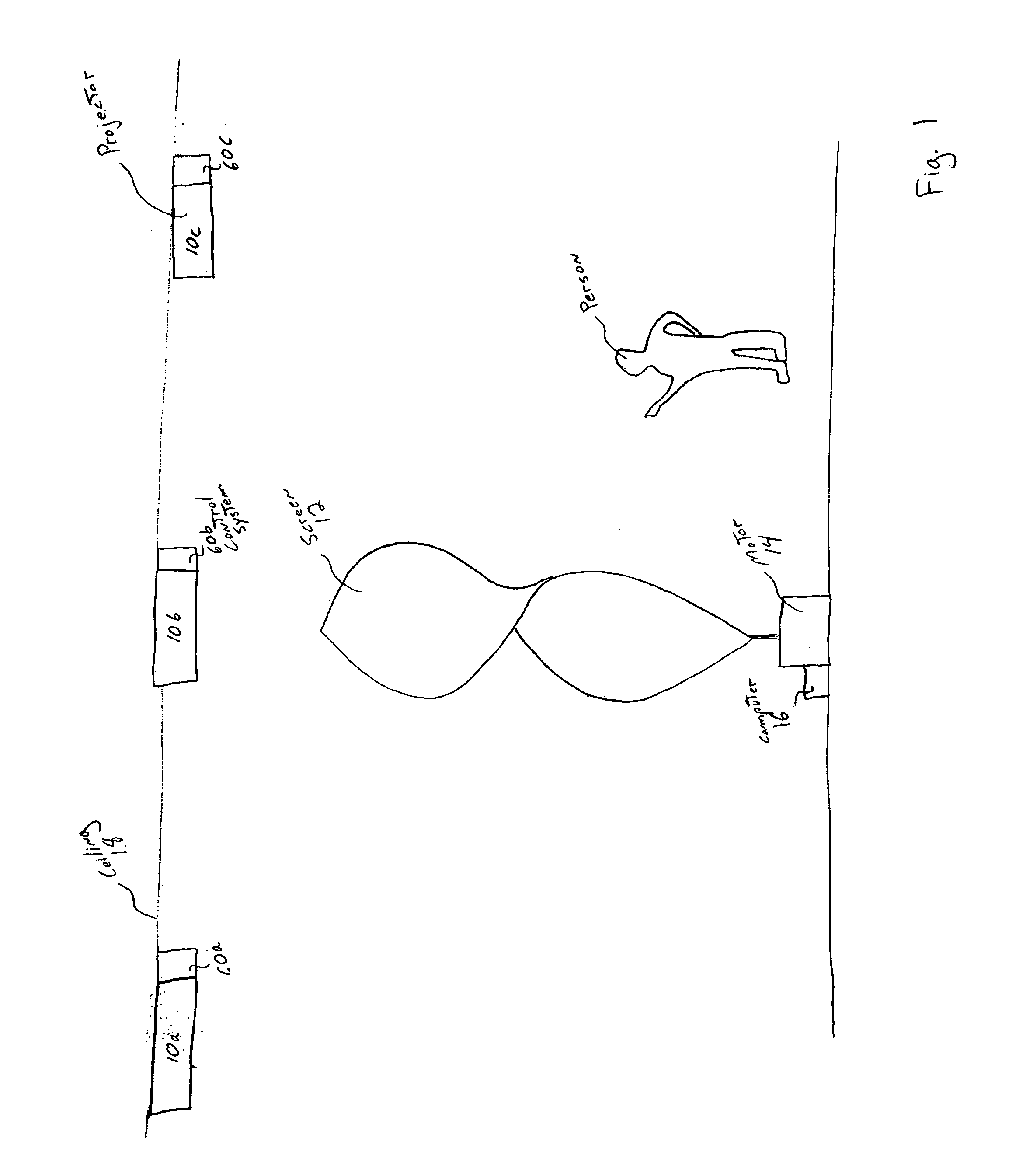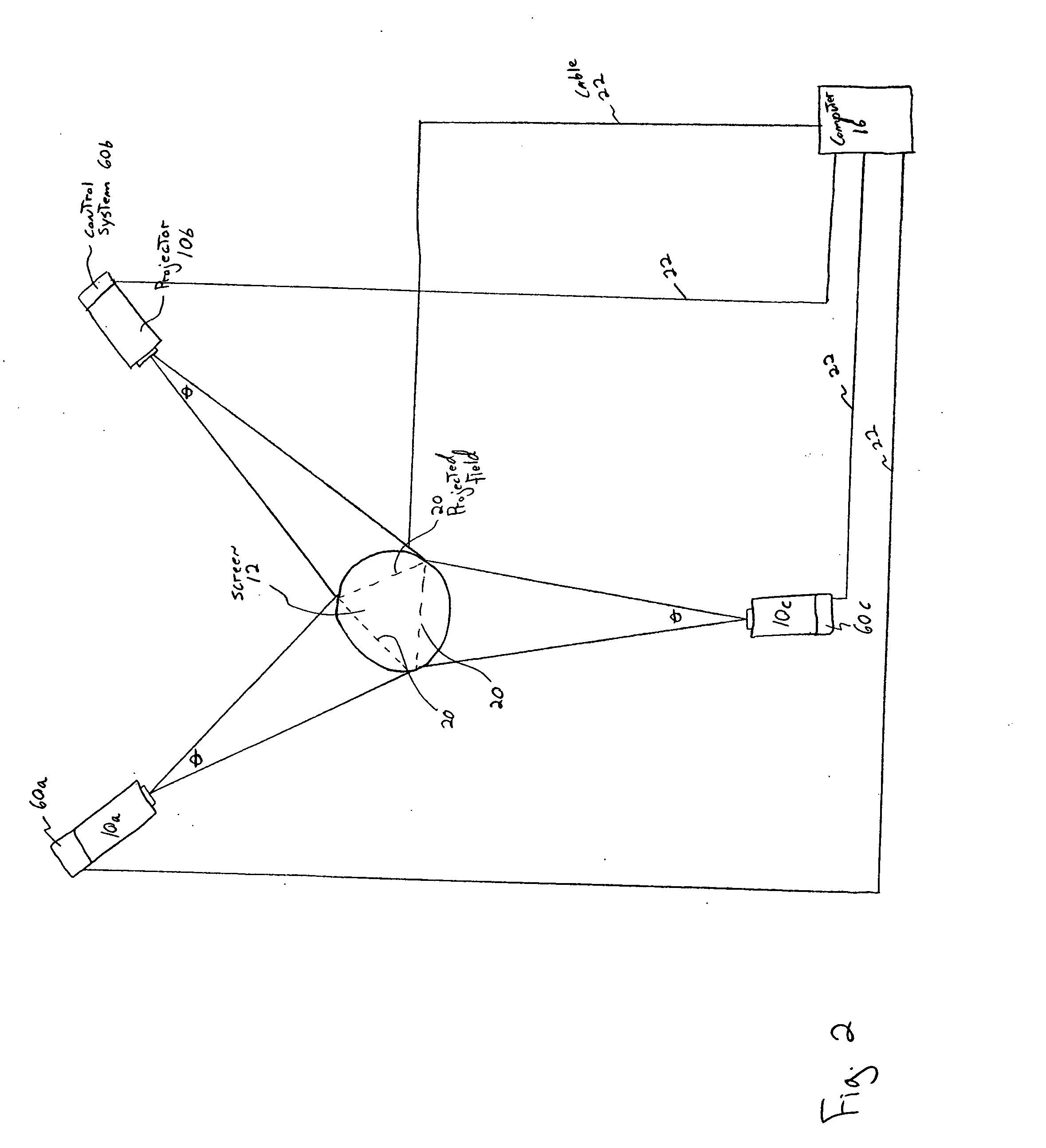System and method for projecting images onto a moving screen
a technology of moving screen and projection system, applied in the direction of printers, instruments, camera focus arrangement, etc., can solve the problems of limited area within which a viewing audience can be accommodated, the best viewing of pictures, and the inability to view conventional projection systems such as those used in movie theaters. to minimize or eliminate glare and spill-light, the effect of increasing awareness of specific exhibits
- Summary
- Abstract
- Description
- Claims
- Application Information
AI Technical Summary
Benefits of technology
Problems solved by technology
Method used
Image
Examples
Embodiment Construction
[0013] The following description is presented to enable any person skilled in the art to make and use the invention, and is provided in the context of particular applications of the invention and their requirements. Various modifications to the disclosed embodiments will be readily apparent to those skilled in the art and the general principles defined herein may be applied to other embodiments and applications without departing from the spirit and scope of the present invention. Thus, the present invention is not intended to be limited to the embodiments shown, but is to be accorded the widest scope consistent with the principles and features disclosed herein.
[0014] Various apparatuses and methods are described below for projecting an image onto a rotating shaped-screen utilizing at least two projectors operating simultaneously in a manner that allows optimal viewing equally well from a plurality of angles relative to the screen, up to 360° horizontally, eliminates glare from the ...
PUM
 Login to View More
Login to View More Abstract
Description
Claims
Application Information
 Login to View More
Login to View More - R&D
- Intellectual Property
- Life Sciences
- Materials
- Tech Scout
- Unparalleled Data Quality
- Higher Quality Content
- 60% Fewer Hallucinations
Browse by: Latest US Patents, China's latest patents, Technical Efficacy Thesaurus, Application Domain, Technology Topic, Popular Technical Reports.
© 2025 PatSnap. All rights reserved.Legal|Privacy policy|Modern Slavery Act Transparency Statement|Sitemap|About US| Contact US: help@patsnap.com



